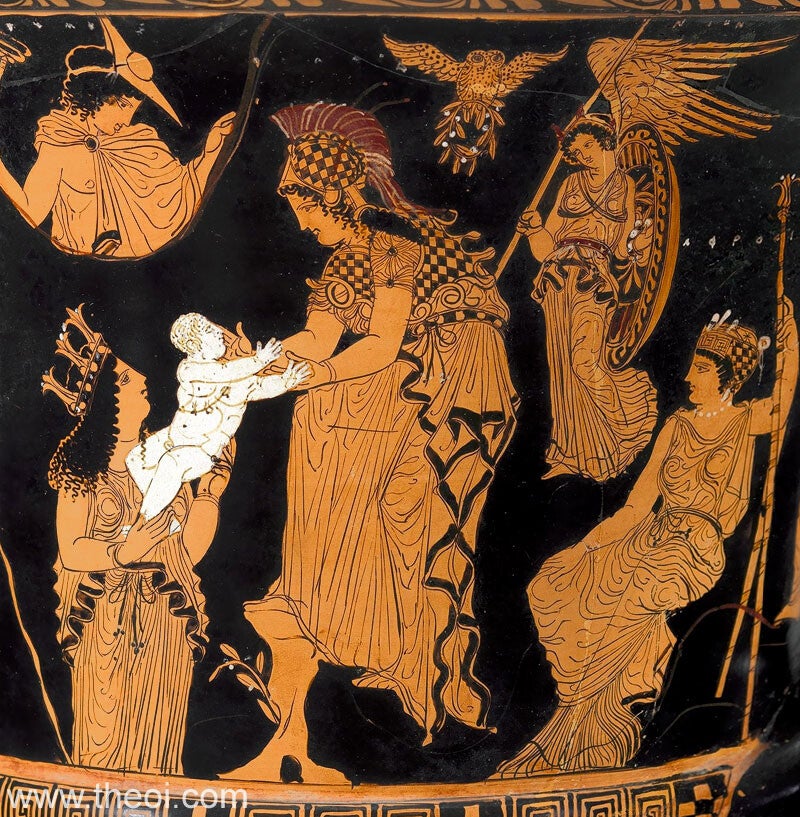
When Sacred Rage Becomes Sacred Power: Myths, Truth, and the Serpent's Voice
For untold millennia, the serpent has slithered through myth and symbol as more than a reptile; it is a bearer of feminine wisdom, fierce protection, and prophetic truth. Seen in goddess lore and sacred temples, the snake is not a creature to fear, but a teacher of transformation. When rage is felt, honored, and trusted, it becomes power.
Throughout history, women’s voices, instincts, and truths have been systematically doubted, dismissed, or demonised. Across cultures, the archetype of the “angry woman” has been twisted into something dangerous or irrational, yet in myth after myth, her “rage” is not chaos but clarity. When her truth is silenced, the world loses its balance. When it is honoured, it becomes a force that shapes kingdoms, restores justice, and alters destiny.
By revisiting these myths, we see that sacred rage - born from injustice and the suppression of truth - is not destruction for destruction’s sake. It is the catalyst that transforms pain into wisdom and wisdom into power.

The Snake in the Garden of Eden: Truth Demonised
In the Book of Genesis, the snake in the Garden of Eden is painted as the great deceiver - the tempter that leads Eve astray. But look closer and a different interpretation emerges. The serpent does not harm Eve; instead, it offers her the fruit of the Tree of Knowledge of Good and Evil. In doing so, it gives her wisdom, discernment, and truth; qualities that empower rather than enslave.
Yet the story shifts blame onto Eve, making her the source of humanity’s “fall.” This is the first in a long pattern: a woman reaches for truth, sees through illusion, and is punished for it. The serpent; a universal symbol of transformation, rebirth, and enlightenment, is demonised. Eve’s choice to seek knowledge is reframed as sin rather than awakening.
This is a foundational example of how women’s clarity and quest for truth have been recast as dangerous. In the Eden myth, the “rage” is not a tantrum, but a refusal to remain in ignorance. It is the original act of self-liberation, and the punishment for it sets the stage for millennia of female silencing.

Medusa’s Snakes: From Shame to Sovereignty
Once a priestess of Athena, Medusa was transformed into a Gorgon after being assaulted by Poseidon in Athena’s temple. In patriarchal retellings, Medusa becomes a monstrous figure - deadly, vengeful, and cursed - with snakes for hair and a gaze that turns men to stone. But in the older, deeper layers of her myth, Medusa’s snake imagery is a mark of power, protection, and ancient wisdom.
Her petrifying gaze is not random violence; it is the power to stop harm in its tracks. The rage she embodies is born from violation and injustice. Demonised by later Greek storytellers, her image was weaponised as a warning: women who stand in their power, who refuse to be violated again, are dangerous.
Seen through another lens, Medusa’s rage is sacred truth: the boundary that says, Never again. Honoured instead of feared, her power becomes a shield, not a curse.

The Oracle of Delphi: Truth Finds a Way
In Greek myth, Gaia birthed Python, the great serpent, to guard her sacred sites. Python was a powerful being, fierce and protective, and deeply attuned to the flow of truth in the world. When Apollo sought to claim the oracle, he slew Python, but the truth the serpent held was not destroyed. Instead, it endured, channeled through the Pythia at Delphi, the prophetess who spoke with the authority of the earth itself.
Python’s story reminds us: even when voices are silenced, wisdom and insight find a way to surface. Rage, protection, and sacred knowing - like Python’s serpentine power - cannot be erased. They transform, move, and speak through new vessels, revealing that when we honor our anger and our truth, we step into a lineage of power that cannot be denied.

Cassandra: The Unheard Prophet
Cassandra of Troy was blessed by Apollo with the gift of prophecy but cursed - when she rejected his advances - so that no one would believe her warnings. She foresaw the fall of Troy, "the Trojan Horse", and her own murder, yet her truth was met with ridicule and dismissal.
Cassandra’s story reflects a deep wound in the collective: when women speak the truth that others do not want to hear, they are labelled mad, dramatic, or hysterical. Her rage is the fire of frustrated truth; the agony of seeing clearly while being silenced.
If her gift had been honoured, she could have saved her people. This is the pivot point: when truth is denied, destruction follows. When truth is honoured, it becomes guidance.

Athena, Erichthonius & the Snake-Born Gift
The story of Erichthonius begins with Athena, goddess of wisdom, and Hephaestus, the god of craftsmanship. When Hephaestus attempted to force himself upon her, Athena fought him off. In the struggle, his seed fell to the earth, impregnating Gaia. The child, Erichthonius, was born from this union of earth and divine spark.
Athena placed the infant in a box and entrusted him to the daughters of King Cecrops, warning them not to look inside. But curiosity overcame them, and upon seeing the child - sometimes described as serpent-legged, a symbol of divine mystery - they went mad.
But Erichthonius grew to become a wise and beloved ruler of Athens, associated with innovation, lawgiving, and the sacred Panathenaic festival. In some interpretations, his birth story connects him to the oracular tradition — as one who bridges divine truth and earthly rule. His serpent symbolism echoes the ancient link between snakes, prophecy, and sacred knowledge.
Here, Athena’s protective rage safeguarded the child who would one day embody justice and stability. Her defence of truth — and her refusal to be violated — led directly to the rise of a king whose leadership was rooted in wisdom.
Conclusion: Sacred Rage = the Fire of Truth
In these myths, the serpent is not passive. She is witness, boundary, midwife to wisdom.
- Eden’s serpent awakens self-knowing.
- Medusa’s serpents protect against further harm.
- Erichthonius models truth-incarnation through leadership.
- Python ensures prophecy survives despite silencing.
When sacred rage is acknowledged and honored - rather than feared - it becomes the oracle speaking through truth, healing, and rebirth.
This mythic weaving offers a powerful mirror: every time we refuse to silence our truth, part of us becomes the oracle the world needs.

